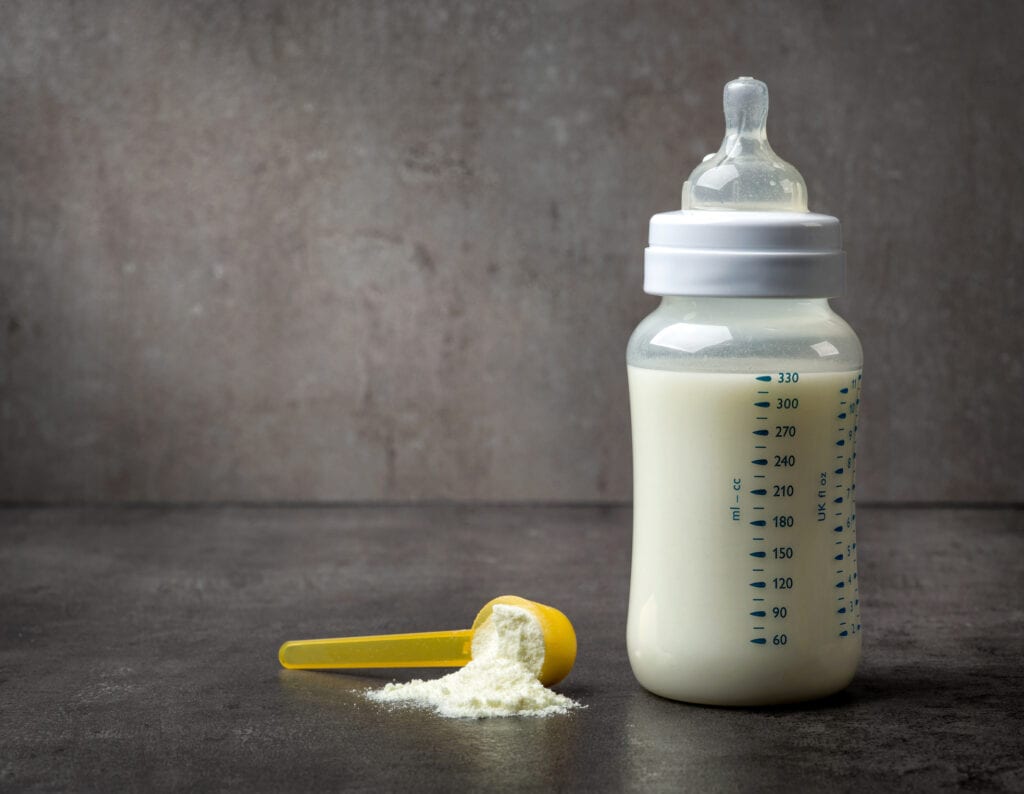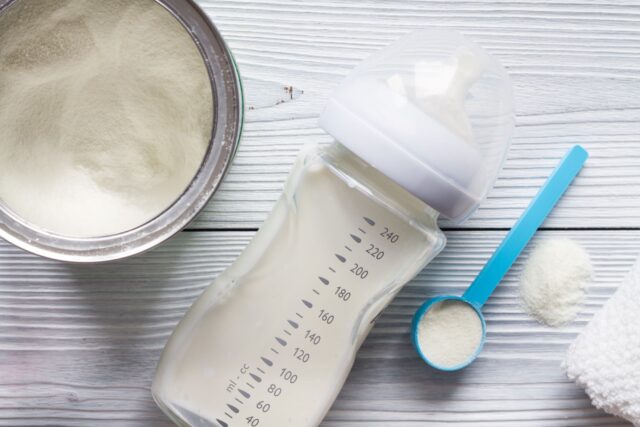Breastfeeding is easily available for most infants. It is usually ready for serving. However, the formula can be chosen, and sometimes prepared, even stored. This means you need to have some knowledge before you can mix it up and serve in a bottle. Feed formula food exclusively if you want or only provide it as a supplement. Whatever you do, it is essential to be armed with the right knowledge.
Formula Food Tips for the Infant

- Snuggle Up. Love is always very important whether you are bottle feeding, doing it from your breasts. Eye and skin contact will improve attachment as well as brain development. Keep the baby close. Extend your session of feeding through cooing, singing.
- Serve bottle for feeding at room temperature from the beginning. You might be surprised to know, but it’s a fact that there’s no health gain of serving a heated bottle. Some babies like it hot, while others prefer the formula at room temperature.
- Remember, never to heat the formula product in your microwave. If the infant likes a hot bottle, then use a hot water pot/bowl. A microwave can result in uneven heating. The container can stay cool, but the formula becomes so hot that the infant’s throat/mouth may burn.
- Involve others in the family. Others can share the responsibility of feeding. This provides the mom with the much-needed respite and also increases the bonding of the entire family with the baby. The mom can relax, get her life back, and even return to work.
- There are all types of formula products out there. Make sure to use only the best you can find like the Holle Organic Baby formula from thebestfromjapan.com. there should be absolutely no compromises here. This provides the right nutrition for the infant.
Signs That the Baby Is Hungry

Try to identify the first hunger signs. Do not wait for the tears because the infant may become uncomfortably hungry if you delay, especially if she has been crying for long. The common signs of a hungry infant include –
- Furiously sucking on the hands/your arm
- Snuggling or pushing against the breasts
- The infant turning head, opening her mouth for finding the food
- Opening her mouth
- Lip-smacking sounds
- Sucking tongue, lip
- Crying like low-pitched sound like wailing which can rise
Formula Product Types

There are so many varieties of formulas available that it can surely become confusing. Whatever you select, make sure that it meets the nutrition requirement of the infant. Luckily, there are good formulas that provide adequate nutrition. Some formula products also have immune molecules, which the baby gets from the mother’s breast milk. There are also those that provide good vitamins, fats, carbs, minerals, proteins.
Many formulas also have arachidonic acid or docosahexaenoic acid. They also contain omega 3 and 6, which improves visual, brain development. That’s the reason why the mom’s milk is not necessarily the best option anymore.
Common formulas for infants –

- Milk-Based – You should certainly avoid giving cow milk because babies less than twelve months of age cannot digest it properly. It will also not provide enough nutrition for the growing needs of infants. However, many formulas are made using cow milk after modification. Milk sugar’s included, protein is changed. Butterfat is included in place of vegetable oil. An iron-fortified product is good. AAP or American Academy of Pediatrics have recommended them.
- Hydrolyzed Formula – They products break down the protein efficiently into smaller portions, which helps in the digestion. They are called predigested formulas because of this. But these products cost more.
- Soy-Based Baby Formulas – They were originally meant for the vegan families, but have now become popular with others too. A soybean product, various supplements are included in them. But soy-based foods are closer to milk from cow instead of human milk. So the infant cannot have it if she is allergic to the milk. The baby can have it only in some situations.
- Special Formulas – There are some infants who will need a special formulation, especially premature babies, and those who show allergies for a soy product or cow milk, or both. Infants suffering from metabolic disorders may also need them. These formulas can be digested easily, they are lactose-free, and hypoallergenic. But they can be offered only with the recommendation of a pediatrician. They are costly too.
- Organic Formulas – They have been developed without herbicides, hormones that promote growth, pesticides, or antibodies. Many doctors consider these formulas are healthier because of this. But some of them are rich in sucrose or cane sugar. They are sweeter than sugar you will find in most formula products. Some experts are concerned that this can cause gain in weight as well as tooth decay. Always see the label before buying. Ask the pediatrician if there is any doubt. For the most diverse range of organic baby formulas, click here.
- Prebiotic and Probiotic Formula – There are formula foods that are rich in bacteria, probiotics, which can prevent the onset of diarrhea in fit babies. However, they should never be served for chronically ill babies. Also, not everyone is convinced that they can treat diarrhea, stop other health conditions. Sometimes, prebiotics is included for reducing infections. There’s no unanimity on whether they are good.
- Follow-Up Formulas – They are meant for babies who are bottle-feeding, are above four months of age. These babies could also be having solid foods. Do not feed these foods to younger babies. Seek the opinion of your doctor.
How Much Formula Is Good?

Be slow for newborns. In the 1st week, the infant will take around one to three ounces for each feeding, at intervals of 3-4 hours. Go up gradually as the baby demands more. But never force your baby. Remember, some babies will feed less than others. Follow this rule always even if you are combining milk from breasts and baby formula.
Measure the weight of the infant. Multiply by two and a half. You will have the figure of how many ounces the baby must-have in a day. So if the infant weighs 10 pounds, she should have 20-25 ounces in a day, which means three or four ounces in four hours.









